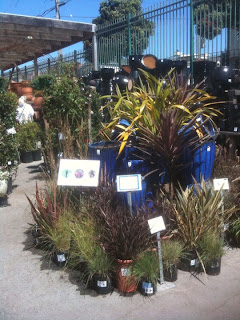“Green Manure” refers to the rototilling of a forage crop to improve the soil. This is done while the crop is green or soon after flowering. It is often confused with “Cover Crops”, which are grown primarily to prevent soil erosion by wind and water. Both can help suppress weeds, reduce insect pests and diseases, and in the case of legumes, fix nitrogen in the soil. They can both be planted any time of year but are commonly planted in the fall.
A major benefit from Green Manure is the addition of organic matter to the soil. During the breakdown of organic matter by microorganisms, compounds are formed that are resistant to decomposition-such as gums, waxes, and resins. These compounds- and the mycelia, mucus, and slime produced by the microorganisms- help bind together soil particles as granules, or aggregates.
Alfalfa and other deep-rooting green manures scavenge nutrients from the subsoil and move them upwards to the surface rooting zone as well loosening and aerating the soil.
The benefits to growing Green Manure are that well-aggregated soil tills easily, are well-aerated and have a high water infiltration rate. Increased levels of organic matter also influence soil humus. Humus is the substance that results as the end product of the decay of plant and animal materials, good stuff.
As for Cover Crops, in addition to fixing Nitrogen from legumes (such as white, red, or strawberry clover, fava beans, vetch or lupine) they help recycle other nutrients like Potassium, Calcium, Magnesium, Sulfur, to mention a few. Annual Ryegrass, Buckwheat, Lupine and Sweetclover extract Phosphorus from soil.
Annual Ryegrass (Lolium multiflorum, also commonly called ‘Italian Grass’) should not be confused with Rye, which is a cereal rye, a completely different species. This annual cool-season grass was introduced to the USA from Europe. It seeds and establishes quickly under a wide range of soils and climates. It is tolerant of wet soils and temporary flooding, and will germinate in cooler soils than most other cover crops. It will grow in sandy soils but is better adapted to heavy clay or silty soils. Annual ryegrass can be used to keep slopes from eroding or to enrich a veggie bed for spring.
Source-www.attra.org/attra-pub/covercrop.html
Tuesday, September 28, 2010
Wednesday, September 22, 2010
Check out our GARDEN DESIGN Seminar Series this weekend!
Make it & Take it: Fall Color Container Workshop
Workshop fee: $45 (Gardener's Reward Members $35)
Sept. 25 – San Rafael, Sat., 10am
Sept. 26 – San Francisco (Pierce St.), Sun., 10 am.
Sept. 29 – San Francisco (Sloat Blvd.), Wed., 6:30 pm
Workshop fee: $45 (Gardener's Reward Members $35)
Sept. 25 – San Rafael, Sat., 10am
Sept. 26 – San Francisco (Pierce St.), Sun., 10 am.
Sept. 29 – San Francisco (Sloat Blvd.), Wed., 6:30 pm
Tuesday, September 14, 2010
When and How to Prune Hydrangeas

The Garden Guru has received many questions this week on when and how to prune Hydrangeas....
Hydrangea microphylla, both mophead and lacecaps, should be pruned in late summer/early fall right after the flowers have faded. The buds for next year’s blossoms are formed in October. If a hydrangea produces no flowers, it is probable that it was pruned too late in the year. Prune stems back to the first or second pair of fat buds below the finished flower. This can be as little as 4”. It is not necessary to prune farther back unless you want to reduce the height of the shrub. Remove canes that are thinner than a pencil to encourage larger blooms on remaining canes. Remove all small, twiggy growth and dead wood.
Hydrangea microphylla, both mophead and lacecaps, should be pruned in late summer/early fall right after the flowers have faded. The buds for next year’s blossoms are formed in October. If a hydrangea produces no flowers, it is probable that it was pruned too late in the year. Prune stems back to the first or second pair of fat buds below the finished flower. This can be as little as 4”. It is not necessary to prune farther back unless you want to reduce the height of the shrub. Remove canes that are thinner than a pencil to encourage larger blooms on remaining canes. Remove all small, twiggy growth and dead wood.
September/October is also the time of year to treat the soil around Hydrangeas to change or deepen flower color. Use Hydrangea Blue or Aluminum sulfate to make flowers blue or purple (acid). Treat the soil with Agricultural Lime to make flowers pink (alkaline). If your Hydrangea is white, the color cannot be modified. The harder wooded Hydrangeas, H. arborescens, H. aspera and H. paniculata, are pruned in late winter. Their flowers are formed on new, spring wood.
Friday, September 3, 2010
Wednesday, September 1, 2010
Get a whiff of new herbs in our rooftop garden
 Most supermarkets have a fresh-herb section nowadays. We have come to expect any decent store to carry all the usual suspects - basil, thyme, chives, tarragon, mint, oregano, marjoram, parsley, cilantro, rosemary, sage - in fresh form. We pound them into pestos, roast our vegetables with them, add them to salads and even use them in cocktails.
Most supermarkets have a fresh-herb section nowadays. We have come to expect any decent store to carry all the usual suspects - basil, thyme, chives, tarragon, mint, oregano, marjoram, parsley, cilantro, rosemary, sage - in fresh form. We pound them into pestos, roast our vegetables with them, add them to salads and even use them in cocktails.But there are so many other herbs out there that are less familiar. And if you're looking for another reason to congratulate yourself on the fine choice you've made by deciding to live in the Bay Area, consider this: There is a slew of utterly delicious herbs that not only thrive in our climate but can radically expand our cooking repertoire.
Read the full article here:
http://www.sfgate.com/cgi-bin/article.cgi?f=%2Fc%2Fa%2F2010%2F08%2F29%2FHOBM1EUM0U.DTL&type=homeandgarden
Subscribe to:
Comments (Atom)

